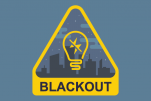For the first time in 20 years, California experienced rolling blackouts at more than 400,000 homes and businesses this week as energy demand outpaced the state’s ability to generate power.
As California faced the prospect of another week of record-high temperatures and the heat-related dangers that come with it, Governor Gavin Newsom issued a State of Emergency and Executive Order declaring an “Extreme Heat Event” and calling on Californians to conserve energy while temporarily suspending limits on power generation.
As a result of the Stage 2 Emergency declared by the California Independent System Operator (CAISO)—California’s grid operator—the Governor called an all-hands-on-deck meeting of the California Energy Commission (CEC), Public Utilities Commission (CPUC), Air Resources Board (ARB), and other agencies in order to address this crisis.
In a later briefing to stakeholders on Sunday, Cabinet Secretary Ana Matosantos described the steps the state would provide to reduce the risk of further power outages that interrupt essential business operations in a year already mired with business shutdowns due to COVID-19.
Longer-Term Policy Issues
These short-term emergency issues should create some urgency to engage in a longer-term policy discussion over how to incorporate increased renewable production into California’s already precarious (and expensive) energy grid.
Less than six months ago, CAISO Regional Affairs Manager Virginia Thompson sat down with California Chamber of Commerce Energy and Climate Policy Advocate Leah Silverthorn to discuss with Capitol staffers issues surrounding renewable integration and potential shortfalls in energy generation that the state would soon face if fast-ramping, flexible resources such as natural gas were less available to meet unexpected demand.
With the Western states increasing their reliance on weather-dependent solar and wind power and moving away from zero-emission nuclear power, Thompson predicted that fewer resources could be available when California’s demand goes up unexpectedly due to weather events like this one. Where out-of-state power is available for purchase to meet this shortfall, it comes at a pricey premium to California’s ratepayers.
Systemic Capacity Shortfall
CAISO predicts a systemic capacity shortfall of between 2,300 and 4,400 megawatts (MW) beginning next summer. If the shortfall is not solved, rolling blackouts will become commonplace as demand outpaces capacity.
CPUC’s analysis found that the shortfall arises from several factors, including:
• shifts in peak electric demand to later in the year and later in the day, which reduces the ability of solar generation to meet peak capacity requirements;
• changes in the method for calculating qualifying capacity of wind and solar resources, resulting in less availability than originally predicted for these resources; and
• uncertainty regarding out-of-state imports as a result of increasing renewables policy across the West.
As a result, a cross-agency working group recommended extension of the life of several natural gas plants to avoid blackouts, including extension of once through cooling deadlines for coastal plants. This proposal is pending before the State Water Resources Control Board and is expected to be heard on September 1. Extensions such as these will help to avoid systemic blackouts until the difficult problem of renewable integration is solved.
Temporary Waiver
In the short term, Governor Newsom’s Executive Order suspended “permitting requirements or conditions” imposed by the Energy Commission and local air districts that limit the amount of power that facilities can generate, restrict the amount of fuel, or impose air quality requirements during peak demand hours of 3 p.m. to 10 p.m., or as otherwise necessary to respond to the event.
While the executive order suspended these restrictions, businesses and facilities still were to notify the relevant local Air Quality Management District, the CEC, and the ARB within 48 hours and provide additional information “within 30 days of the order.”
Matosantos indicated this situation caught everyone off guard and was due primarily to a 1,000 MW unanticipated gap and a delay/unavailability of a plant. She also indicated that demand was about as predicted, but that the speed of demand was faster than usual. Without further action, these regulatory suspensions were due to expire at 11:59 p.m. on August 20, 2020.
At a mid-week news conference, the Governor acknowledged how efforts of energy producers and customers helped prevent blackouts and noted that state officials looked forward to cooling temperatures relieving the strain on the energy grid.
On Thursday morning, the “Flex Alert” switched from red to green and CAISO posted a note thanking consumers who did their part to conserve.
California’s ability to keep the lights on is limited to the resources that state policymakers have chosen to promote and incentivize. Policymakers would be wise to address these problems before blackouts become another regular occurrence.
To sign up for Flex Alerts, visit www.caiso.com or download the CAISO App.


